UPDATED – December 2, 2014 – The Roland RP301 and RP310R are now replaced by the new RP401R which is a much better piano than the RP301R for less money ($1599 internet discount price). Please go to the following link to read my review of this new piano: Roland RP401R Review
Previous review of RP301/301R – I semi recommend the Roland RP301 ($1699 internet discount price) or RP301R (approx $1999 store discount price). What I mean by “semi recommend” is that I do not fully recommend these models because of a few basic deficiencies which I discuss below. I do like Roland pianos (specifically their HP series) and have used them personally for years and it’s a great company. But in these two specific models there are some things that I just don’t care for which I consider to be quite important in digital pianos. Between the two models, the Roland RP301R is a big upgrade over the basic RP301 in terms of technology and educational features. Between the two models, the 301R is definitely worth the extra money and if it were not for some issues having to do with the key action and piano sound, in my opinion the RP301R would be a very nice piano for its price. The basic RP301 can be found and purchased on-line at many internet stores, but the upgraded RP301R can only be found in the US at regular piano stores and prices for that model are not advertised on-line.
There are many cool features on both models including “twin piano” which
electronically divides the 88-key piano keyboard into two identical
44-key keyboards so you can play duets with two players simultaneously,
& 30 very nice individual and layered instrument sounds on the RP301 (above left pic) and 54 impressive instrument sounds on the RP301R (left pic – control panel). Both pianos are offered in attractive satin brown rosewood and satin black color furniture style cabinets with sliding key covers and come with a matching bench. Although Roland is still using a smaller 24 watt, two speakers sound system in both pianos this is enough power for pretty good volume but unfortunately for some reason the sound is a bit thin and tinny when you play the middle part of the keyboard (where most people play). The sound is actually much better
through a good pair of headphones, although Roland’s SuperNATURAL
piano sound is not so supernatural in the middle octaves of the
keyboard even through headphones, and it sounds unnatural to me. The lower
bassier piano sounds are full and resonate, but as you get up
to the middle and upper octaves, that’s where the piano starts sounding
somewhat electronic and thin and I don’t particularly like it. A first time player or someone who doesn’t know
what pianos are supposed to sound like may not notice this unnatural
part of the piano sound when playing in middle and upper octaves, and so
it may not be an issue for some people, but it is for me and that’s why I am pointing it out. The dynamics and expression response on these pianos however is very good and much better than many other digital pianos, and that a big plus.
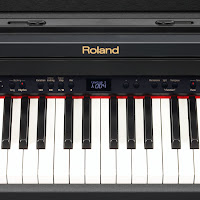 I
I
was looking forward to seeing what new type of key action Roland would
be using in these new models and they elected to use their basic Ivory
Feel-G Keyboard Action found in a couple other lower priced Roland models including
the FP50 and RD300NX. This newer ivory feel-G key action is supposed to be
heavier and closer to that of a real acoustic piano, and it is heavier. Roland
did improve that part from previous models although the key movement is sluggish when playing softly or lightly, especially compared to other digital piano brands in the same price range and also compared to regular acoustic pianos. The upgraded Roland key actions (ivory-S and PHAIII
in the higher priced HP models (as well as the the new portable FP80) move noticeably better and I do recommend those models.
Roland
also claims to have added an “escapement” feature in the key action
which they have in their better key actions. This key action mechanism
duplicates more closely the touch of a grand piano as opposed to an
upright piano. Unfortunately, this “escapement” feature is virtually non
existent in the G-Keyboard as opposed to the escapement feature in the
Roland PHA series of key actions found in the majority of Roland pianos including their HP series. You just cannot feel it (at least I could not and I know what it should be doing), no matter how hard or
softly you press the keys. Roland might as well as have not mentioned
this on their specs because it just doesn’t work based on my playing
experience with them. This is not the case with the better Roland key
actions as you can definitely feel this feature on those pianos and it’s
quite good.
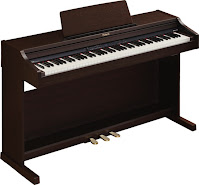 |
| Roland RP301R |
Finally,
with regard to the key actions, Roland has also had a noticeable
problem with a few of their models making a very loud thunking/thumping sound when the
keys are played with some force or if you just
have a heavier hand in playing the keys, so to speak. The Roland (now discontinued) HP302
digital piano at about $2500 had this issue and I have in the past played many of them and they all did the same
thing having a loud knocking sound when the keys were going down. Unfortunately it is no different on these new models. So in an effort to improve the weight
and resistance of the keys, it would appear that Roland gave these 2 pianos (RP301/301R) the same problem as existed in the older HP302 and other previous models. The loud thunking noise (when playing the keys) sounds like there
isn’t enough felt under the keys to prevent the keys from knocking on
the keybed underneath the keys. I don’t know what causes it exactly, but
when you especially play at lower volumes or use headphones for private practice, the thumping sound
from the keys is disturbing and distracting and I
have had owners of Roland pianos with this issue tell me this before.
However, if you play the keys very lightly or softly on these two new models,
you really don’t hear the thumping noise at all, which is good. But
that’s not the way people play all the time because it’s necessary to use dynamics and
different expression and therefore you will eventually run into this situation,
especially if your a student and want to get better at playing or if you’re somewhat more advanced in your playing skill level, or
you just like playing the keys a bit harder with more dynamic expression (like I do).
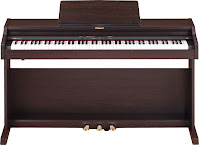 |
| Roland RP301 rosewood |
Piano key actions and the way they move, look, and feel are very
important and people need to consider that before they make a digital
piano purchase decision. Although all digital piano key actions on all
brands produce some background noise when being played, there are some
digital pianos that have obvious distracting noise that are just not
acceptable to me, and the RP301 & RP301R are two of those pianos, and there’s nothing you can do about it. However, both of these models do have nice front panel dedicated control
buttons, a handy
sliding key cover, 128 notes of note polyphony memory
which is good, an adjustable electronic metronome for timing, the Roland calls it SuperNATURAL
piano sound , an 1/8″ mini jack audio input to run an iPod/MP3 player
through to pay along with (very cool), a song recorder, special effects,
5 levels of touch sensitivity control, built-in music holder clips in
the music rack (above left pic), and half-damper gradual pedal sustain for more
authentic pedal expression (which is good).
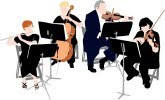 The RP301R (R stands for Rhythm) has a bunch of very cool upgrades over the regular RP301 such as 60 interactive style accompaniments (backing tracks) divided into 11 music categories so that you can “play with the band.” This feature allows you to play regular pop, jazz, classical, country, big band, and other styles of music on the piano and then a background group of instruments (including a drummer) will follow your playing and recognize your chords and notes (chord recognition technology) and play appropriate backgrounds just like a band or orchestra would do. It doesn’t wait for you like the teaching system on some Yamaha digital pianos but instead fills in some great multi instrumental music behind you piano playing. This is a fun feature for people just wanting to have fun (such as for adults not wanting to take lessons) or wanting to improvise with various music accompaniment styles. The quality of these background arrangements are very good which is a Roland specialty, and I like them very much. There are other pianos that have automatic style arrangements in this price range including Yamaha & Casio, however, this feature on the Roland is even more intuitive and natural sounding. Unfortunately, based on my experience, this function is normally not utilized by piano students or their piano teachers unless the students are older (teens and adults) and the teacher is able and willing to teach this chord method of play. This feature is something you could learn to use on your own but you need to have good rhythm and timing for it to sound good and understand the concept of playing that way. It really is a fun way to make music in ways that you would not otherwise do, but it’s also a feature you and/or your family may not use much.
The RP301R (R stands for Rhythm) has a bunch of very cool upgrades over the regular RP301 such as 60 interactive style accompaniments (backing tracks) divided into 11 music categories so that you can “play with the band.” This feature allows you to play regular pop, jazz, classical, country, big band, and other styles of music on the piano and then a background group of instruments (including a drummer) will follow your playing and recognize your chords and notes (chord recognition technology) and play appropriate backgrounds just like a band or orchestra would do. It doesn’t wait for you like the teaching system on some Yamaha digital pianos but instead fills in some great multi instrumental music behind you piano playing. This is a fun feature for people just wanting to have fun (such as for adults not wanting to take lessons) or wanting to improvise with various music accompaniment styles. The quality of these background arrangements are very good which is a Roland specialty, and I like them very much. There are other pianos that have automatic style arrangements in this price range including Yamaha & Casio, however, this feature on the Roland is even more intuitive and natural sounding. Unfortunately, based on my experience, this function is normally not utilized by piano students or their piano teachers unless the students are older (teens and adults) and the teacher is able and willing to teach this chord method of play. This feature is something you could learn to use on your own but you need to have good rhythm and timing for it to sound good and understand the concept of playing that way. It really is a fun way to make music in ways that you would not otherwise do, but it’s also a feature you and/or your family may not use much.
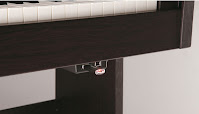 |
| Roland RP301R USB input/output |
Other nice upgrades on the RP301R is a 3-track recorder for multitrack recording and learning along with being able to save your recorded songs direct to a USB flash drive (left pic), a keyboard adjustable split function for playing style accompaniments or splitting the keyboard for two different sounds, the ability to layer two sounds together for the two different tone buttons, a very attractive and easy to read LCD display screen that gives out more usable info, a USB flashdrive input for playing General MIDI songs or even audio WAV file songs for play along and learning with your favorite tune. You can slightly speed up or slow down the audio WAV file song while learning to play it which is useful. You can even transpose the General MIDI song playback into a different key than the piano itself for easier playback in the key you may be more comfortable with. See my blog article for more info on General MIDI here: General MIDI educational features and why they work! The RP301R also has a direct USB to computer output (above left pic) for connection to a laptop or iPad for even more fun with your piano!
| Casio PX850 |
My final conclusions are…if it were not for the less than desirable keyboard action movement & key knocking noise along with having the thinner sounding piano tone in the middle to upper octaves on the main piano sound, the Roland RP301R piano would have been nice competitor to the other brands although I think it should sell for a lower price in my opinion given the competition out there. The RP301 model without all of the extra features is just too basic and there are other pianos out there for quite a bit less money which are much better values including Yamaha, Casio, and Kawai. If you like either of the Roland pianos, and the deficiencies I have
mentioned here do not bother you, then you should buy it because
at the end of the day…it’s your money and your decision and there are
many things to like about these pianos:). Roland is really a great company and I just wish they did not have these fundamental issues on their RP & F digital piano cabinet models. You should also consider
the other options in this price range by Yamaha, Casio, and Kawai who build
competitive models that may even give you more “bang for the buck” as far as a satisfying piano playing experience. In fact if you are considering the Roland RP301 or RP301R then I would recommend you also consider the new Roland RP401 as I mentioned earlier as well as the Casio PX850 (above left pic) as excellent choices for their price. The Casio PX850 has 40 watts of sound power going through 4 speakers along with using 256-note polyphony. It also has a smooth key action and nice recording features and is offered in a contemporary compact cabinet. Go here to read my review of the Casio PX850: Casio PX850 review
| 2014/2015 model Kawai KDP90 |
Another good piano option is the Kawai KDP90 digital piano ($1149 internet price). The Kawai company knows pianos because they build concert quality acoustic grand pianos used by pro musicians, teachers, churches, and schools around the world. After personally playing this new model I find that the KDP90 to be a very nice piano for the price. It has a quiet and smooth feeling graded hammer key action & resonate grand piano sound that is impressive for its size, along with a variety of functions that makes this new model an excellent buy for its price. It comes with a comfortable matching bench and a 3 year parts & labor warranty, along with the prestigious Kawai name on it. I have done a review of the KDP90 and you should check that one out at the following link: Kawai KDP90 review
If you want more piano info and LOWER PRICES than internet discounts or store prices, please email me at tim@azpianowholesale.com or call direct at 602-571-1864.




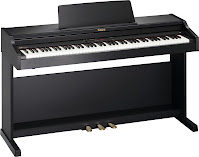
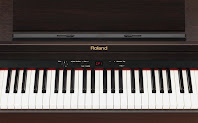











Cheers for this review Tim. Very detailed. I was looking at bothe the 301 & 301R today in a local store, and was quite impressed. Was comparing the 301 with Y ydp161. Personally thought the Roland felt better, however I can understand your point about the speakers. Can't seem to find any Casio or Kawai in my area (west mids, England) Can you suggest other particular models in same price range worth considering? Yamaha especially? Cheers, Gary 🙂
Kawai ES7, Yamaha YDPV240 would be worth considering as well as the new Casio PX350 slimline portable
Tim and Eric, I cannot thank you enough for all of your help and support during my search for the "perfect" keyboard for me. Although I searched many places online, you were the only place where I could actually talk to someone who could answer all of my questions. If anyone out there is trying to decide who to buy from, let me say that these guys are there for you every step of the way from delivery to set up! It certainly took a lot of anxiety out of ordering a big dollar item online. I could not be happier with my Casio. I have a Petrof grand paino, and I knew this keyboard would have a lot to live up to, but I could not be happier. It has all the fun things I wanted it to do, plus it has a great sound and a wonderful feel. I LOVE it. Thanks, Tim and Eric! Bettye